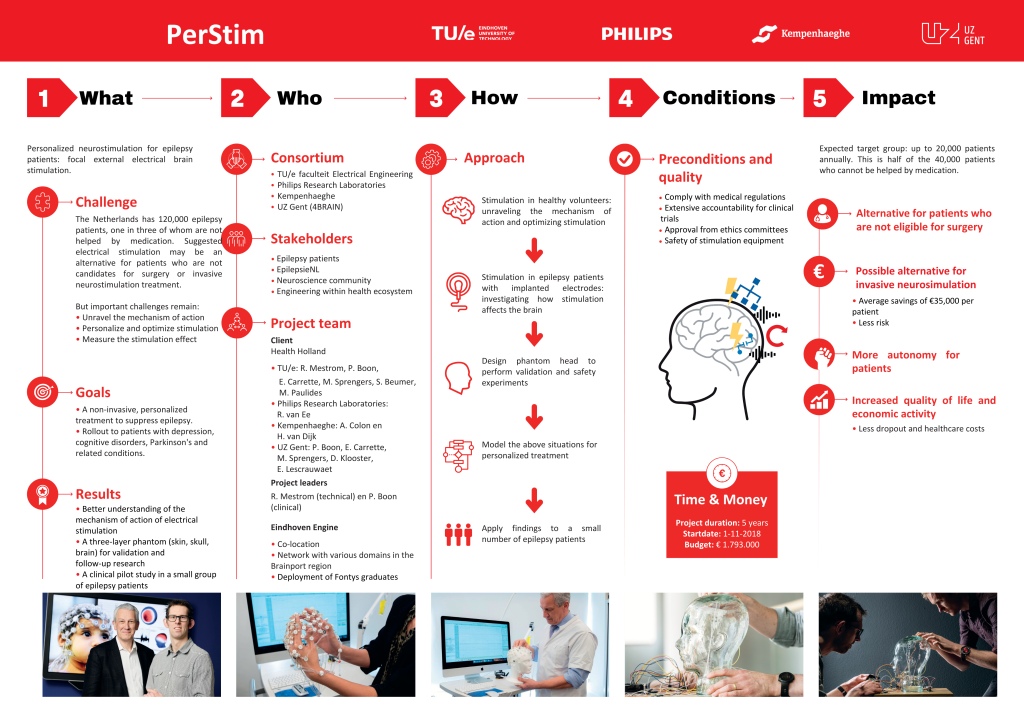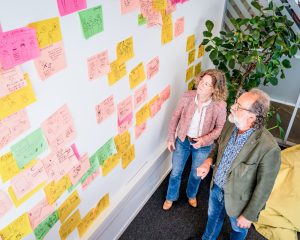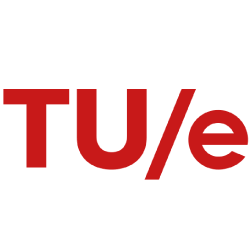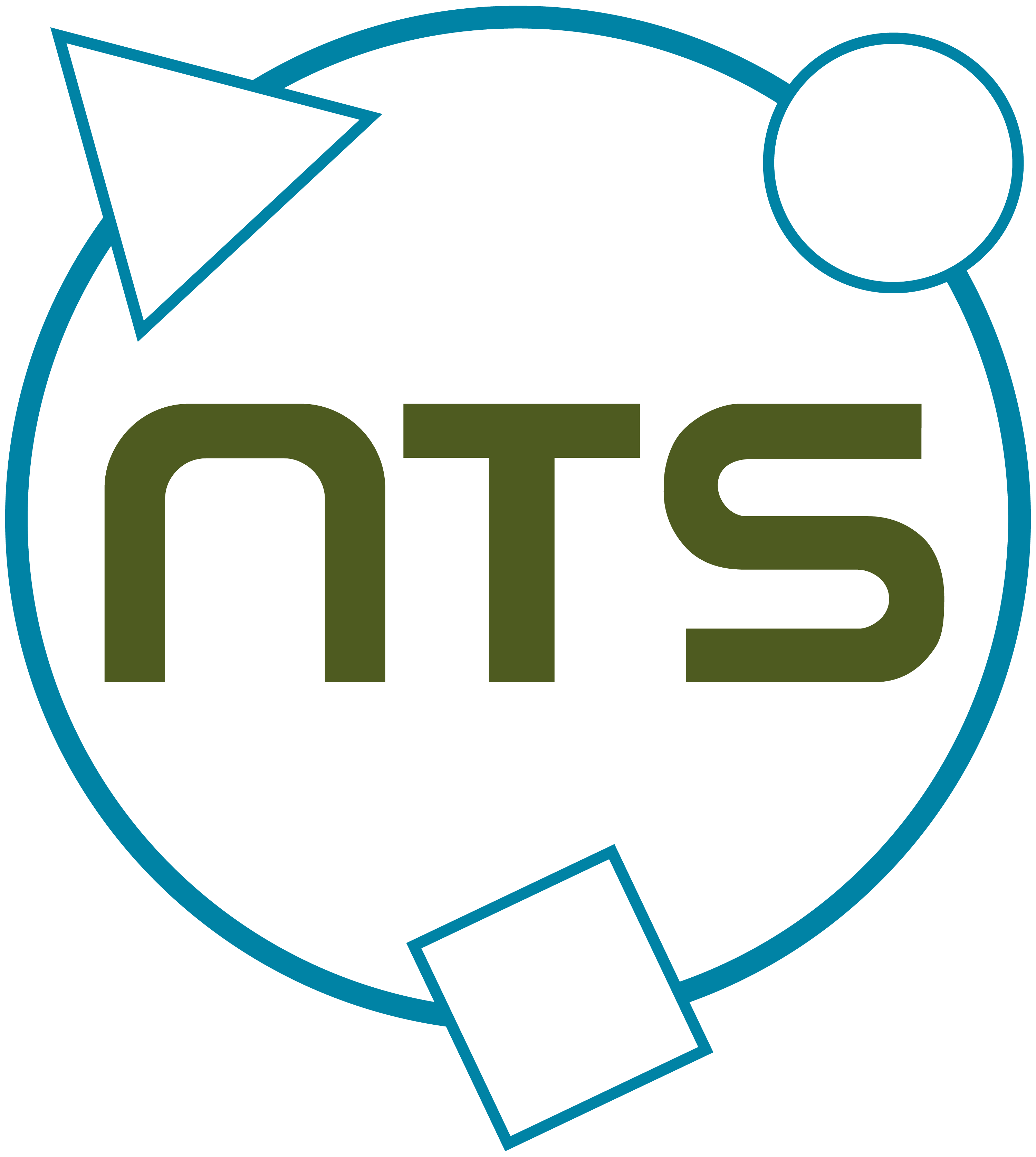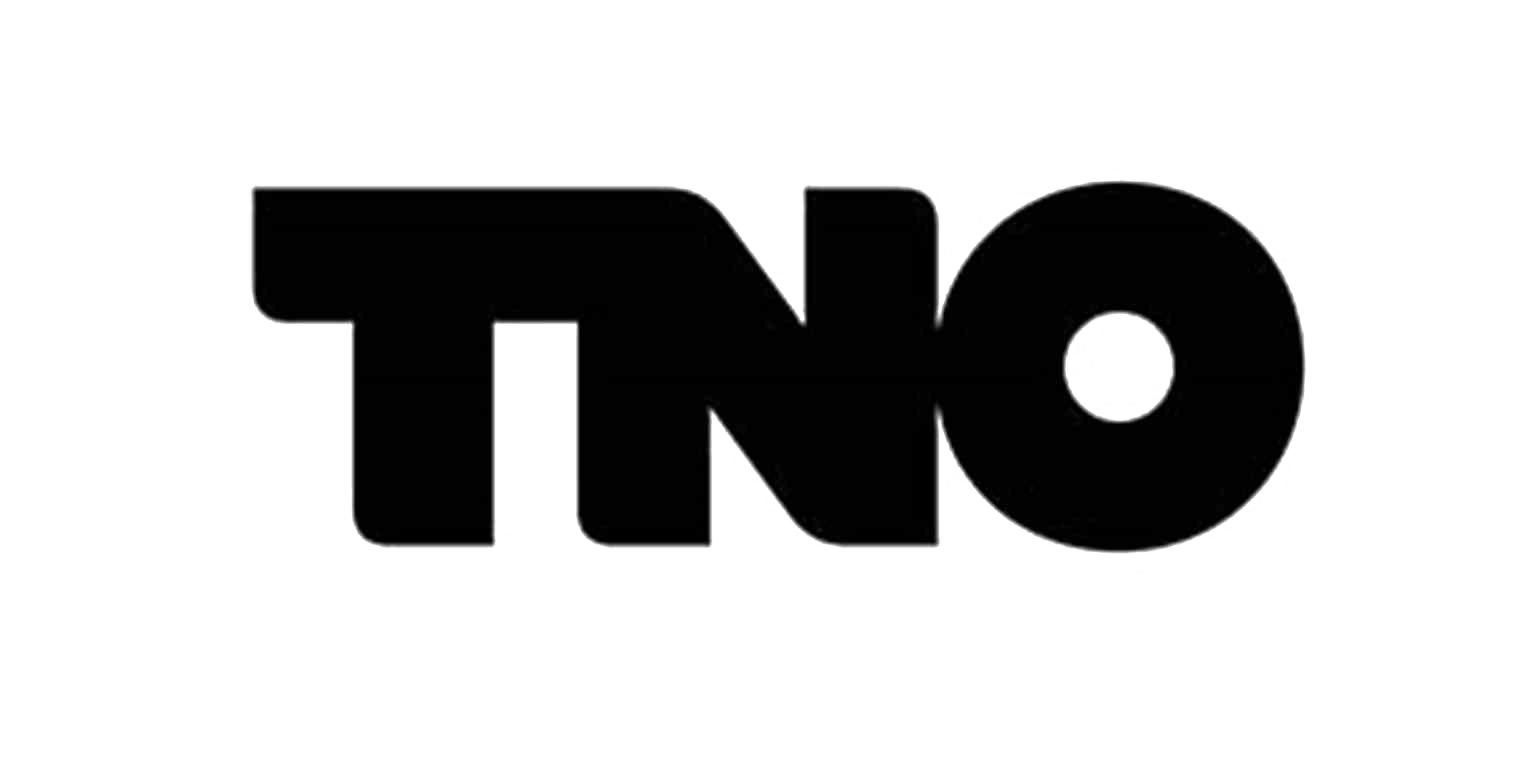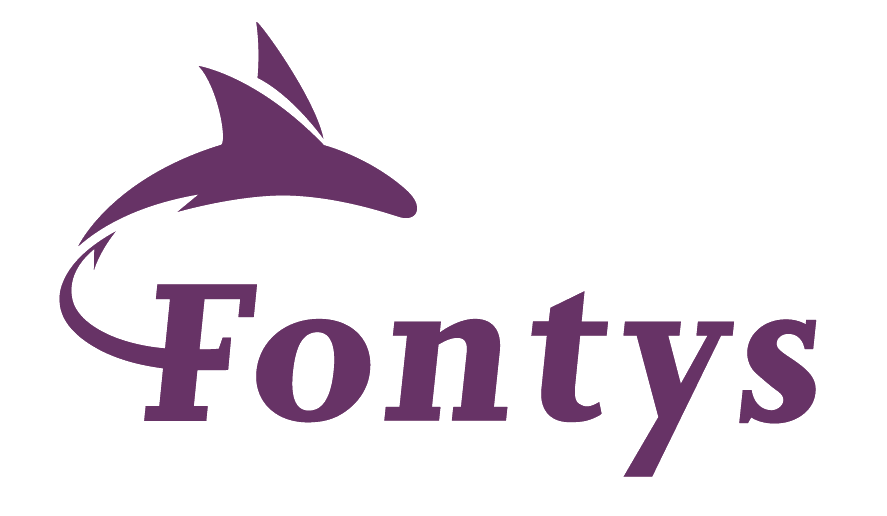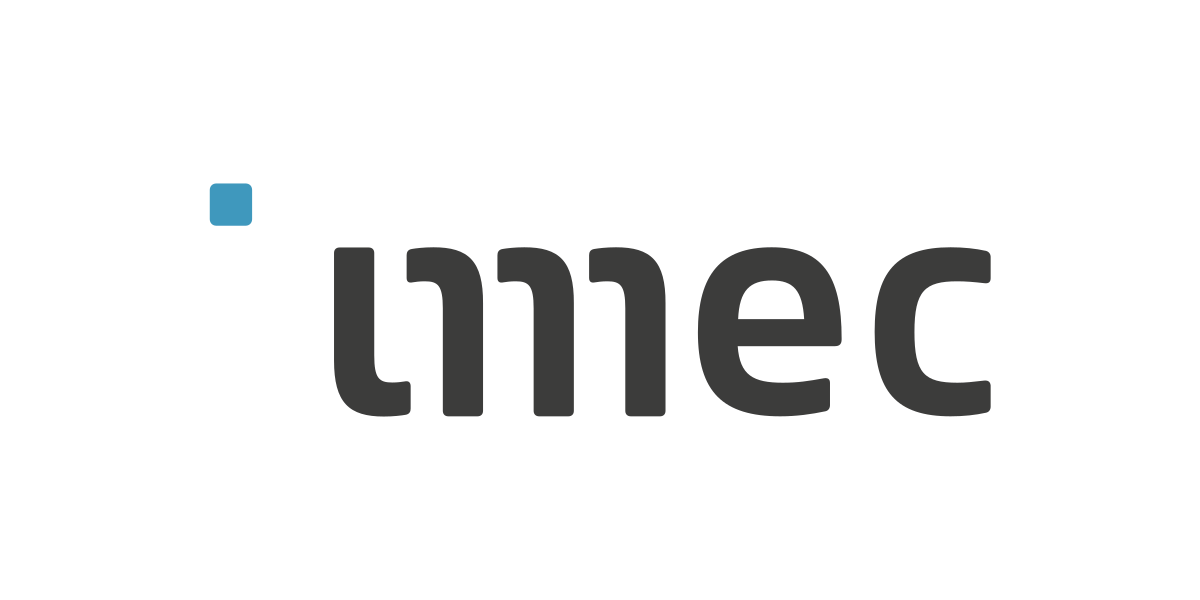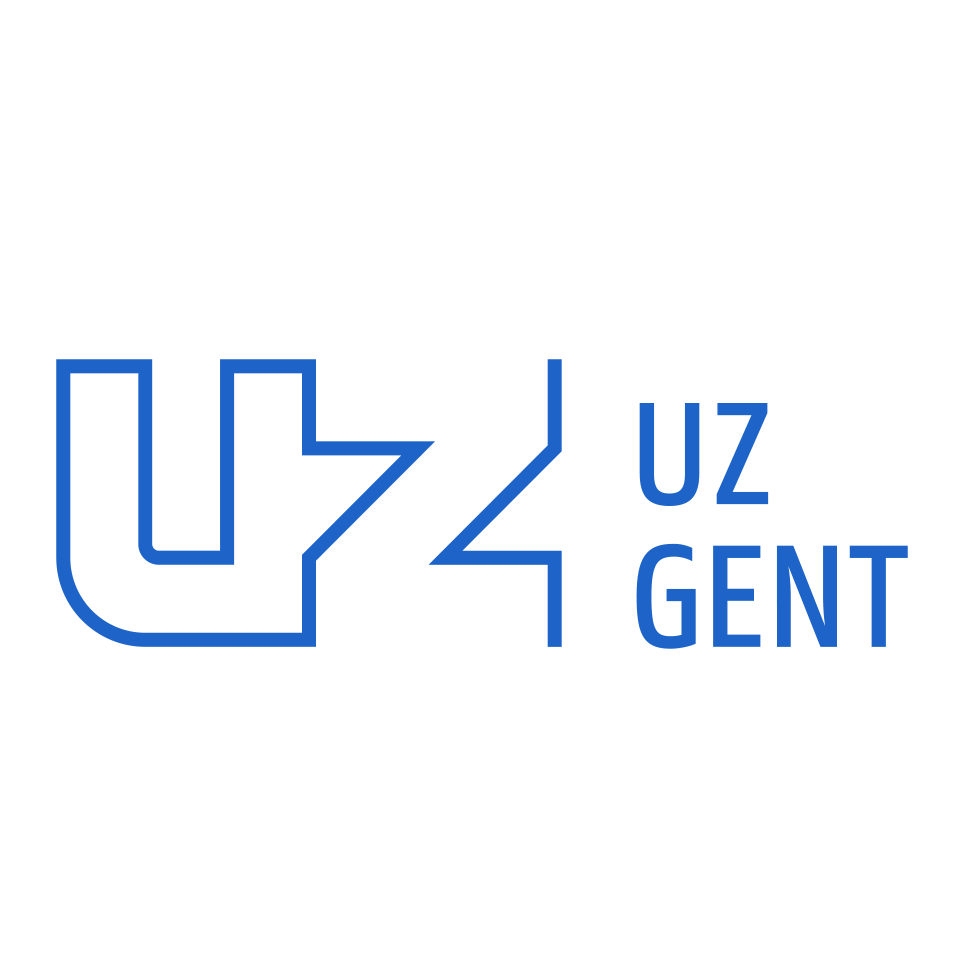Empowering Epilepsy Care: Decoding Transcranial Electric Stimulation
Hi all, my name is Steven Beumer (30 years old) and for the last four years I’ve been doing my PhD at the TU/e, specifically the Electromagnetics group of Electrical Engineering. I was born and raised in Geldrop, a small village next to Eindhoven, so studying at this university was almost a no-brainer.
My research is focused on using transcranial electric stimulation for epilepsy patients that cannot be treated using medicine or surgery and is part of the PerStim project. This project was conceived from the wish to be able to reduce the treatment gap in epilepsy and thus lower the burden of this disease on the patients and society.
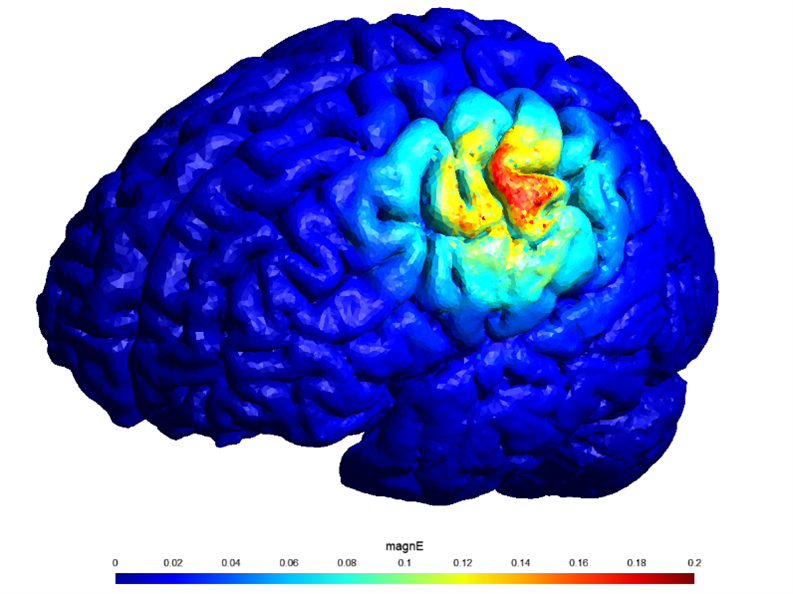
Electrical stimulation is simple, but very complex
Together with the Ghent University Hospital, Kempenhaeghe and Philips we started to research the use of electrical stimulation for epilepsy treatments. Through extensive literature studies, we found that the working mechanism of this technology is still poorly understood. Thus, we set out to answer a fundamental question using clinical studies: “Are we stimulating the brain with currents that go straight through the skull, or is it taking a more complicated route like the facial nerves?”
This method holds great promise for the future because of its affordability, simplicity, and potential for home use, which could ultimately reduce the need for frequent hospital visits.
To support these studies, I was tasked with making patient models, optimizing the electrode positions as well as analyzing the data. Together with students from Fontys and the TU/e, we built a full workflow to do this in a very quick and efficient manner. Eindhoven Engine enabled us to cooperate with the students from the Fontys. Their working mentality and different way of approaching problems were fundamental to significant parts of this work. Our clinical studies are still running, but preliminary results have shown that the answer to the abovementioned question might be that the stimulation works via both the direct and the indirect paths.
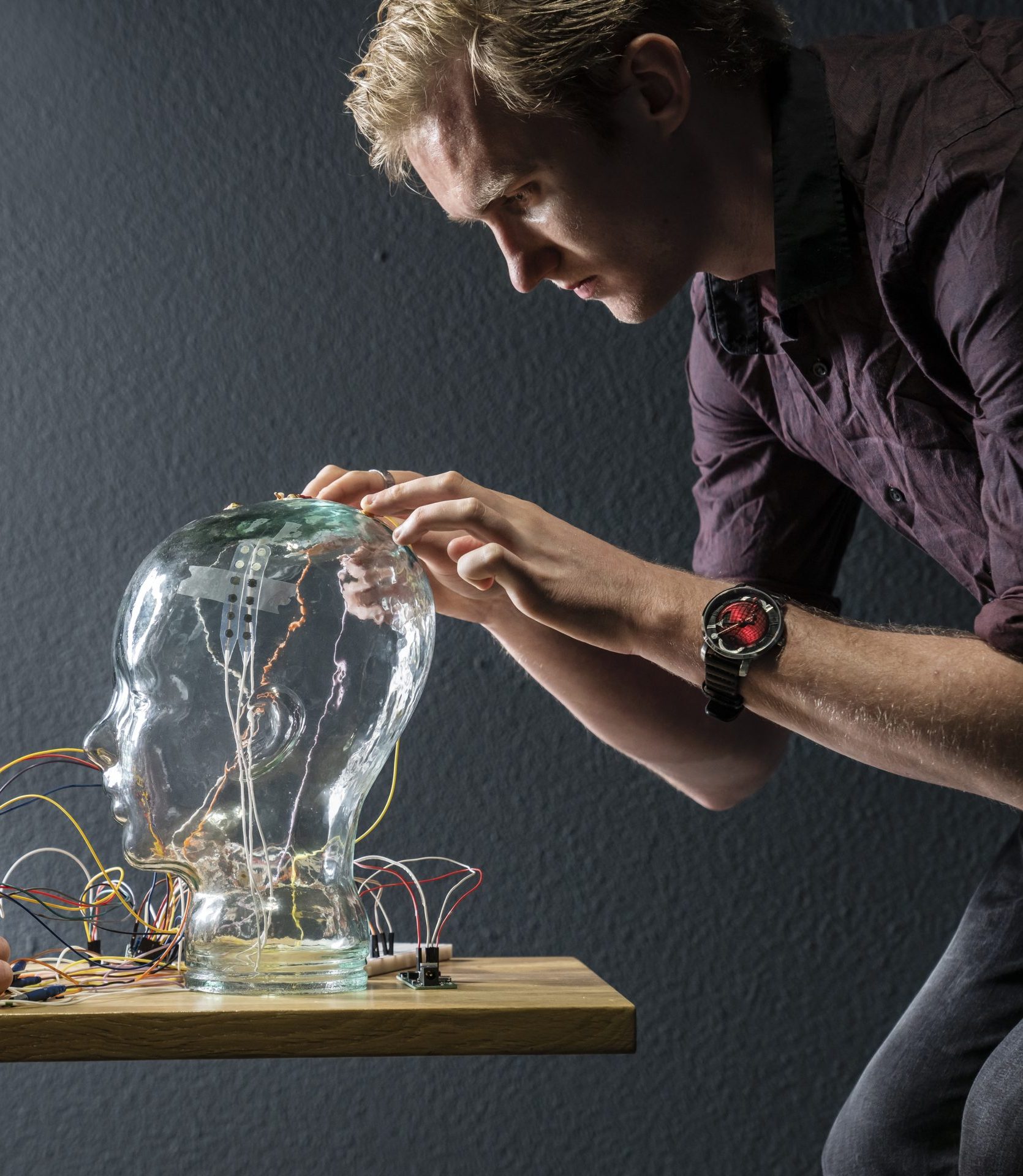
Looking into the future
Even though the use of transcranial electric stimulation is more complex than initially assumed, we have just started to unravel the actual working mechanism and I wholeheartedly believe that as we gain a deeper understanding, we can improve the methods and their efficacy. This method holds great promise for the future because of its affordability, simplicity, and potential for home use, which could ultimately reduce the need for frequent hospital visits.
My time at the university is running out, but I am still as fascinated by the world of brain stimulation as I was when starting this project and I’ll keep working in this field to improve the understanding of these techniques and unlock their potential for patients.
Festival of Disruption filled with energy and enthusiasm
The Festival of Disruption’s second edition thrived with energy and enthusiasm. Kicking off the day, architect and urban designer Floris Alkemade offered a compelling perspective on how to embrace transformative changes.
Engaging workshops
Following this inspiring start, attendees were presented with seven engaging workshops, each delving into methods to expedite innovation, including ‘Design doing’, ‘Accelerating transitions via disruption’ and ‘1+1=3.’ Moreover, they had the chance to stay up to date on the latest developments in Eindhoven Engine’s OpenCall projects and the Emergence Lab initiative focusing on low literacy. As the day drew to a close, the atmosphere was charged with excitement during the wrap-up quiz, concluding a day, filled with learning, inspiration, and networking.
Did you miss out on the festival or do you want to relive the day? Get an impression of it here!
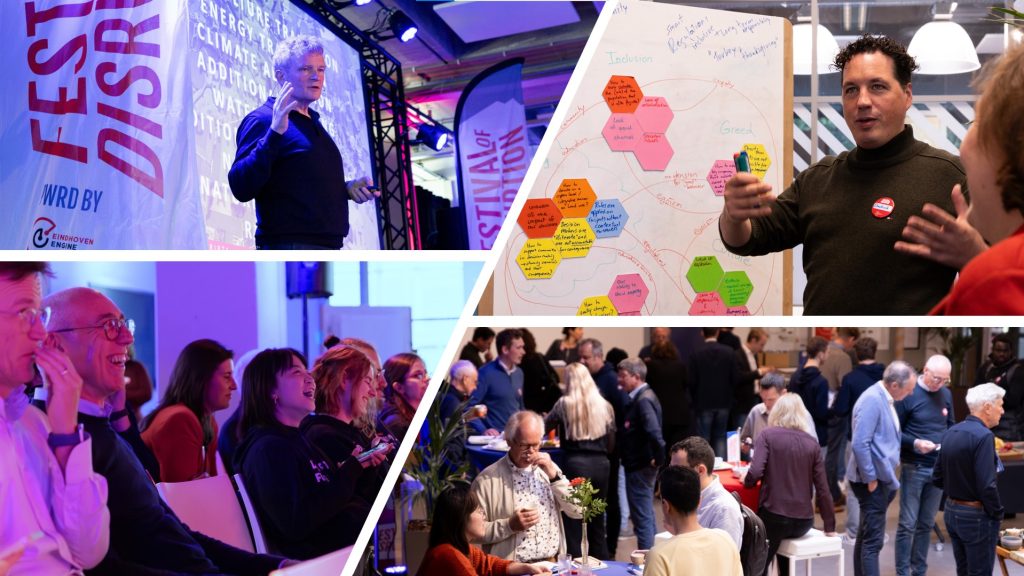
New project videos: Carbyon 2.0
The atmospheric CO2 levels are excessively elevated, so urgent action is needed to lower them. Eindhoven Engine Project Carbyon is developping machines that are capable of capturing carbon from the surrounding air and filtering it out. The retrieved carbon dioxide can be either reused or securely stored for an indefinite period. By adopting this approach, Carbyon can effectively address the issue of climate change.
Into a working machine
Marco Arts is the chief operating officer at Carbyon. Currently, Carbyon is collaborating with Eindhoven University of Technology and DIFFER in the Eindhoven Engine project Carbyon 2.0 to verify their key technologies in their lab environments. Currently, they are developing a fully integrated working machine that takes in ambient air and delivers pure CO2.
Direct air capture by different solvents
Jasper Simons, CTO at Carbyon, showcases the first test version of their direct air capture equipment. And Shilpa Sonar is working as a postdoc researcher at Eindhoven University of Technology. Shilpa’s research is mainly focused on the direct air capture by the different solvents. Her research will be carried out in the Carbyon’s own home-produced reactor.
Vacancy: EngD trainee – Prototyping multipurpose integrated digital twin for Brainport
Are you a masters graduate who wants to continue your study and obtain an Engineering Doctorate (EngD) with a focus on the big question in urban development, such a s energy transition, nitrogen reduction, the exponential increase of polution in a city?
Eindhoven Engine and the TU/e department Industrial Design is offering a fully funded 2-year position to master graduates leading to the award of an EngD (Engineering Doctorate) degree in Designing Human- System Interaction.
About the assignment
In cooperation with a few project partners, Eindhoven Engine has decided to contribute the development of an integrated multi-dimensional digital twin of the Brainport region. Currently many scattered efforts for digital twinning are running. The aim of this project is to align a reasonable amount of these efforts into a state-of-the-art prototype that allows the Brainport region to address diverse actual problems (such as nitrogen reduction, the energy transition to renewables, the addition of 100.000 persons to the region and their impact on traffic, emergency service, …).
The challenge for the EngD position at Eindhoven University of Technology would be to develop and evaluate a concept prototype of a multidimensional, integrated digital twin for the MRE (Metropolitan Region Eindhoven) area. This digital twin should accurately represent the physical and functional aspects of the region, including infrastructure, transportation, buildings, and other urban systems.
Candidates should have a background in an area related to interaction design (e.g., industrial design, software engineering, and human computer interaction). They need to be creative, and entrepreneurial and to have an innovative mind. Candidates will be embedded in a multidisciplinary team consisting of computer scientists, industrial designers, and business entrepreneurs.
New project videos: Carbyon 2.0
The atmospheric CO2 levels are excessively elevated, so urgent action is needed to lower them. Eindhoven Engine Project Carbyon is developping machines that are capable of capturing carbon from the surrounding air and filtering it out. The retrieved carbon dioxide can be either reused or securely stored for an indefinite period. By adopting this approach, Carbyon can effectively address the issue of climate change.
The Automotive Week 2023 is thé hotspot if you want to keep up with the latest European developments in mobility and if you want to expand your network in our mobility sector. Innovative technologies and the right skills become more and more important to make the world of mobility smart, sustainable and safe.
In the heart of the Brainport region, at the Automotive Campus in Helmond, we open our doors to the international public to experience the mobility of the future.The Automotive Week offers an exclusive look behind the scenes for future talent, professionals, governments and knowledge institutions.
Eindhoven Engine reporters Ferry Wortelboer and Jasmijn Schol will be at the Talent Fair (16 April) to find out how visitors envision future mobility. Does this match with the innovations we will be seeing this week? How do innovations in mobility accelerate?
The built environment is responsible for about 36% of the global energy demand. About 5-30% of the energy use of buildings is related to energy waste due to faults in heating, ventilation and air conditioning systems. The goal is to develop a self-learning module that can monitor and diagnose climate systems in large buildings.
Into a working machine
Marco Arts is the chief operating officer at Carbyon. Currently, Carbyon is collaborating with Eindhoven University of Technology and DIFFER in the Eindhoven Engine project Carbyon 2.0 to verify their key technologies in their lab environments. Currently, they are developing a fully integrated working machine that takes in ambient air and delivers pure CO2.
Direct air capture by different solvents
Jasper Simons, CTO at Carbyon, showcases the first test version of their direct air capture equipment. And Shilpa Sonar is working as a postdoc researcher at Eindhoven University of Technology. Shilpa’s research is mainly focused on the direct air capture by the different solvents. Her research will be carried out in the Carbyon’s own home-produced reactor.
Videos
Gregor van Baars – Projectlead TUe & Systems engineer TNO
ASML is extremely successful with their current technology. The question lies in how much room there is for expansion. This research begins from a completely different standpoint, offering significant advantages but also presenting numerous challenges.
Ron de Bruijn – PhD candidate TU/e
My research is about wafer stages that are driven by piezoelectric actuators. These actuators make a mechanical contact between the rest of the machine and the wafer stage. Minimal disturbance or vibration in the rest of the machine could actually affect a wafer position.
Infographic
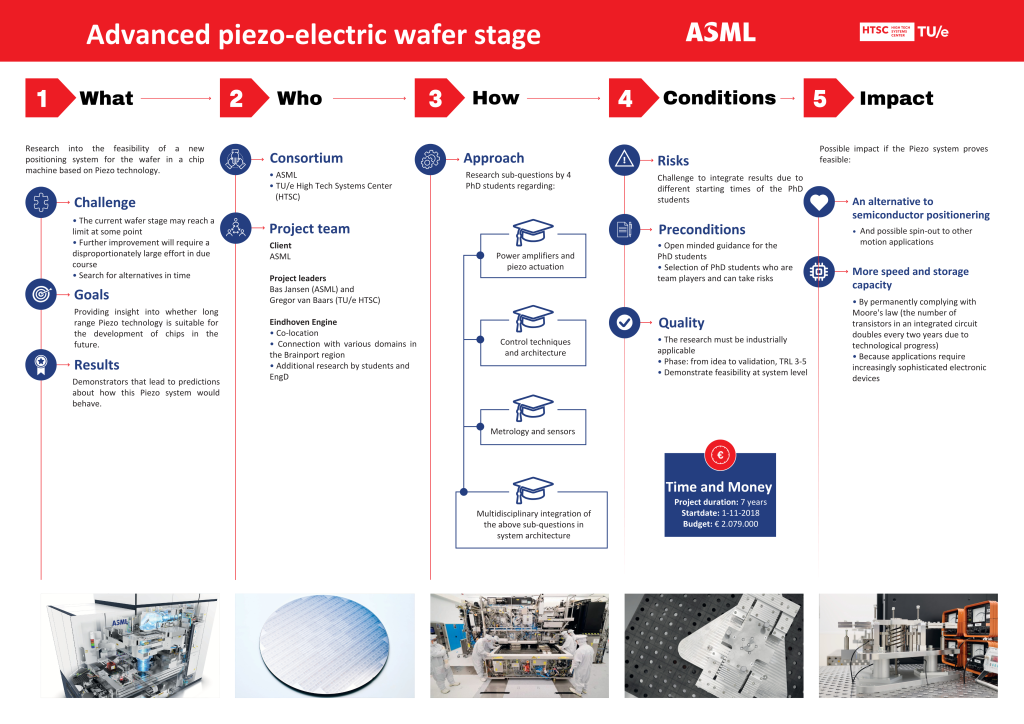
Archive
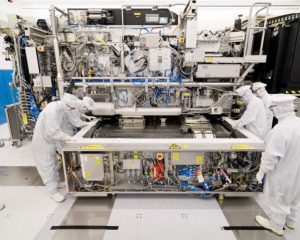
Media: Zoeken naar nieuwe concepten buiten comfortzone gevestigde ontwerpprincipes
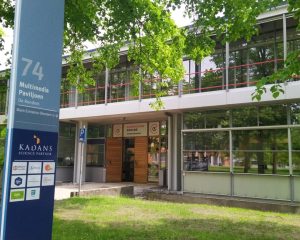
Podcast Kracht van de Regio
Project updates
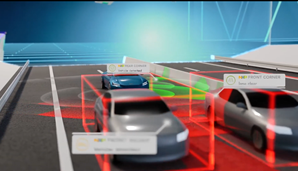
An update on the Smart Mobility project
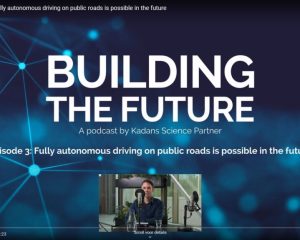
Building the Future: Fully autonomous driving on public roads is possible in the future
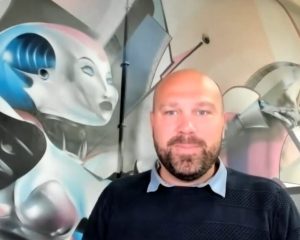
Smart Mobility @Eindhoven Engine during DTW
With the support from Eindhoven Engine, this project successfully hired EngD trainees and TAs, enhancing the project’s overall impact. The team also benefited from using the garage in Disruptor, which served as a collaborative workspace for developing the self-driving research vehicle. This co-creation space also served as a showroom, where demonstrations were given to stakeholders and external parties.
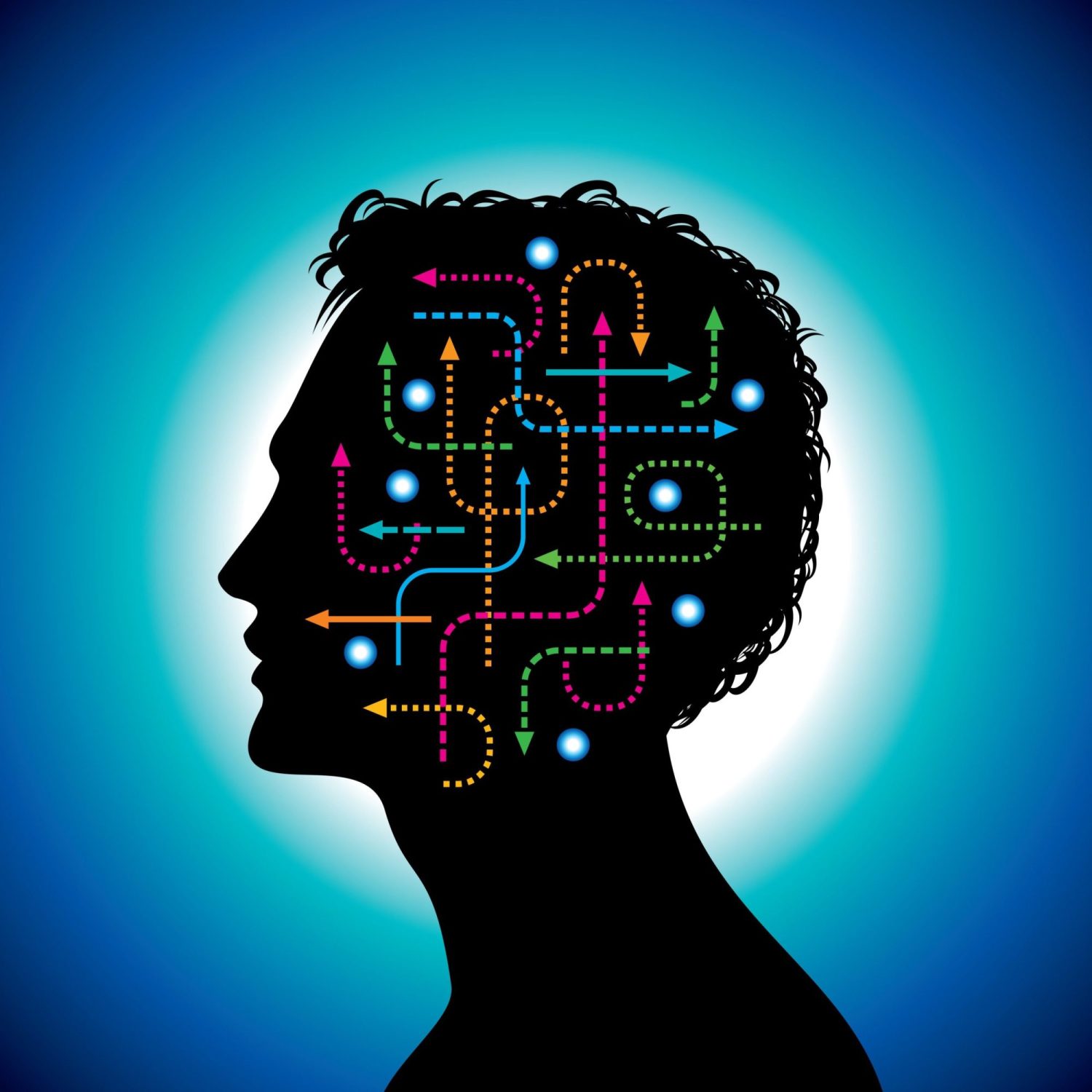
A non-invasive approach to treatment
Using EEG- and MR-imaging based transcranial electrical stimulation, the Eindhoven Engine project PerStim (Personalized neurostimulation) investigates how treatments for patients with refractory focal epilepsy and prevalent co-morbid disorders can be personalized effectively. Via transcutaneous direct/alternating current stimulation (tDCS/tACS), the overall aim is to develop personalized, non-invasive neurostimulation protocols to provide (non-)refractory epilepsy patients with a better quality of life. This non-invasive approach to treatment is a method whereby an operation is not needed and treatment outside the body, as it were, is made possible.
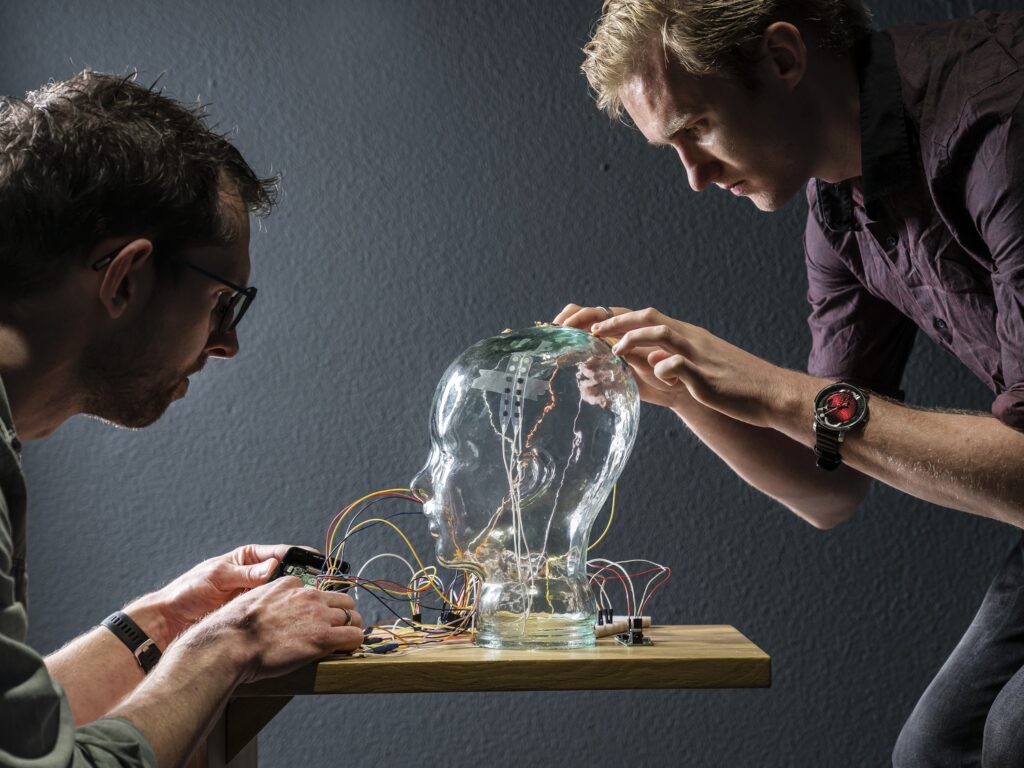
Tight technical-clinical cooperation
To realize these ambitions, TU/e has teamed up with Philips Electronics Nederland B.V. and Kempenhaeghe, the Academic Center for Epileptology. UZ Ghent is also involved through the part-time neuromodulation chair of Professor Paul Boon. PPP Allowance co-funding has been made available to Epilepsiefonds by Health~Holland’s Top Sector Life Sciences & Health in order to stimulate public-private partnerships. Project partner meetings take place approximately once per month, with Fontys and TU/e student projects expected to be held in Eindhoven Engine’s building Disruptor. Such close collaboration and the integration of their results in clinical trials will allow for direct testing of PerStim’s neurostimulation hypothesis.
First clinical study
With the support of Eindhoven Engine, PerStim successfully completed the first clinical study and developed a suitable skull model to commence the second clinical study. The project also integrated two Fontys students into the team, whose contributions will be included in a PhD thesis. Additionally, a spin-off project was launched under PerStim to extend the non-invasive neurostimulation approach to transcranial focused ultrasound stimulation. This initiative was further bolstered by recruiting an additional postdoc, in collaboration with the Donders Institute in Nijmegen.
Videos
In the Netherlands one third of the epilepsy patients (100.000+) keep having seizures; even after trying several medicines. The next treatment will be surgery. But there is a promising alternative treatment: neurostimulation.
Rob Mestrom – Project Leader
In this project PerStim Rob Mestrom and his team do research in personalizing neurostimulation for epileptic patients. He does this with a tight technical clinical cooperation with partners TU/e, Philips Electronics, Kempenhaeghe, UZ Ghent, and Epilepsiefonds.
Steven Beumer – PhD candidate
Steven Beumer uses brain images and brain recordings to try to optimize stimulation protocol for patients. Together with Fontys graduation students, they are working on artificially skull that mimics the real skull and its electrical properties.
Infographic
